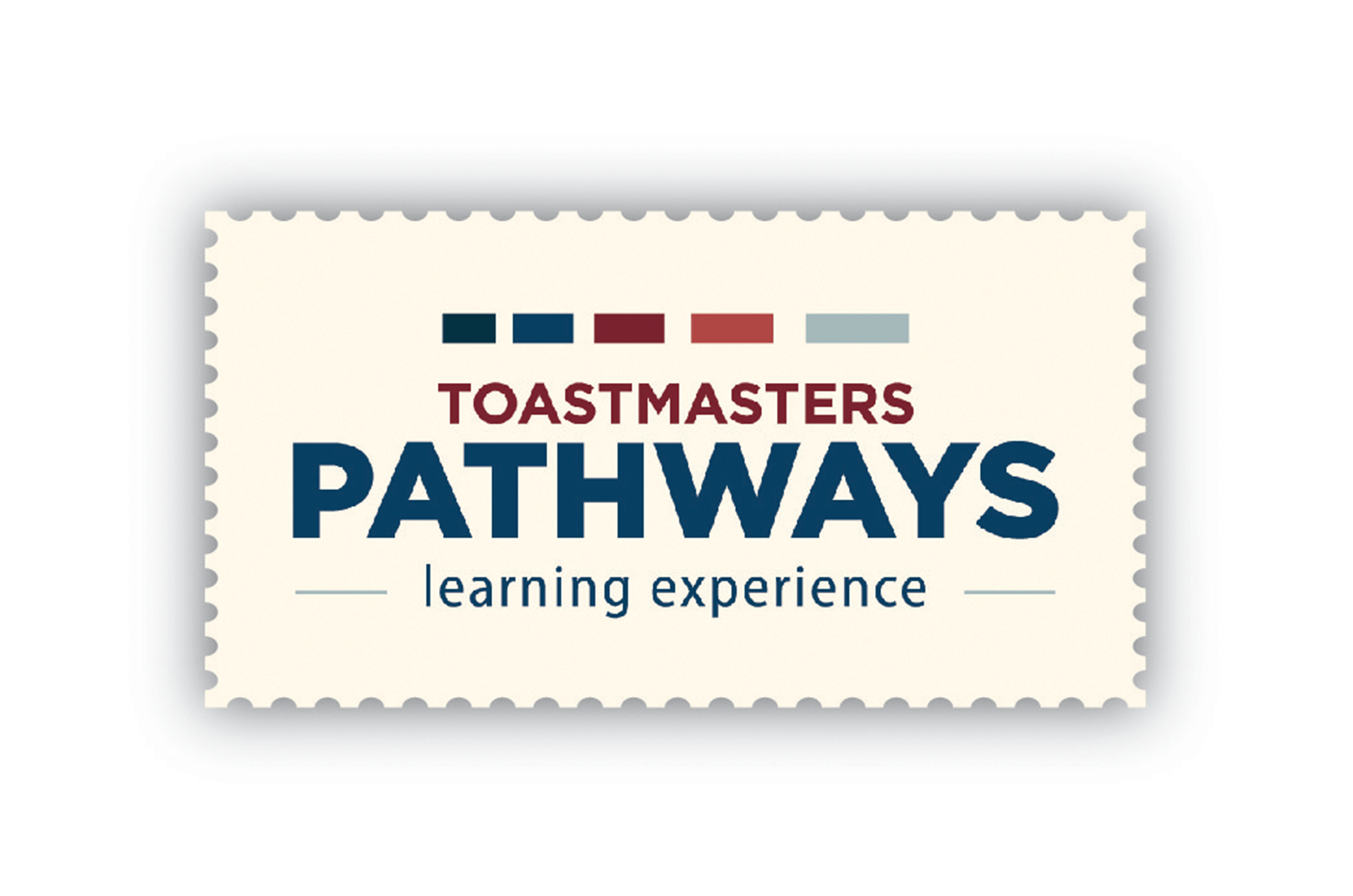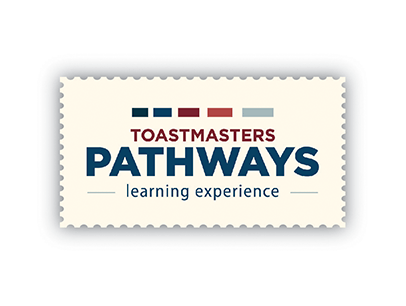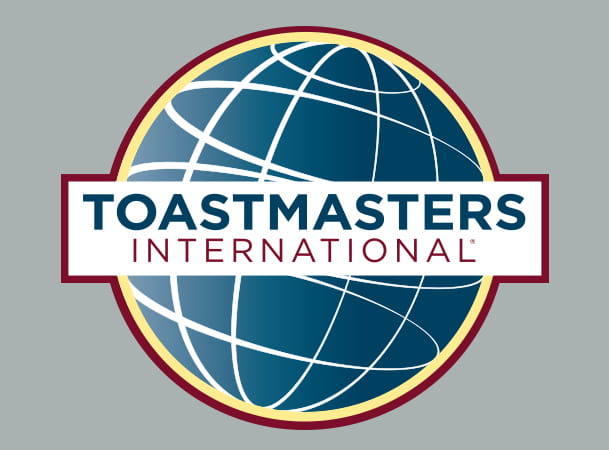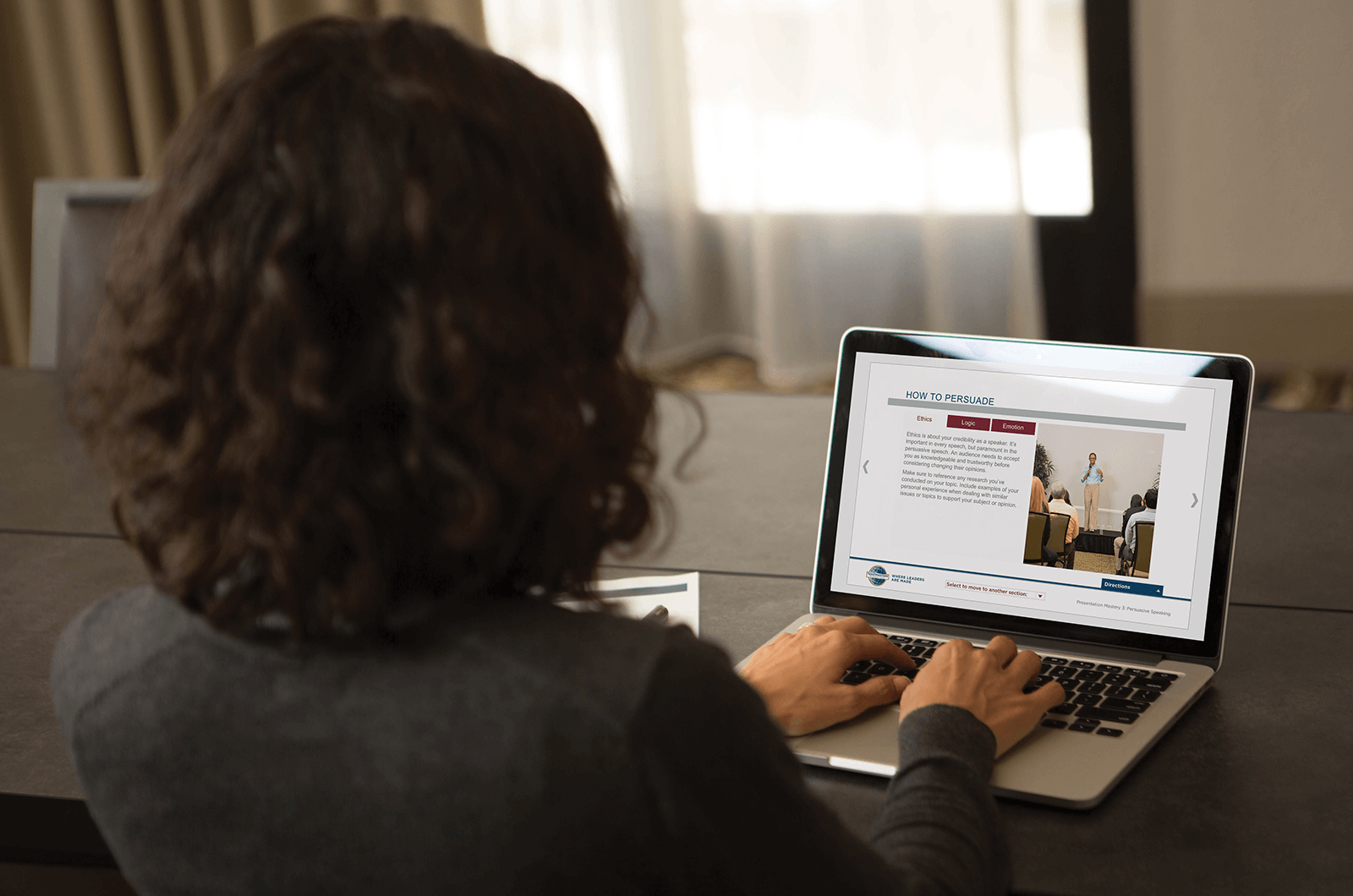
To become an accomplished public speaker, you must connect with your audience. The Presentation Mastery path, part of Toastmasters’ Pathways education program, provides the techniques to do just that. It helps you write a persuasive speech, tell an engaging story, handle difficult audience members and generally become a better speaker.
Presentation Mastery is one of 11 paths in Pathways. Like all paths, it features five levels of progressive complexity, with a mix of required and elective projects. The early projects include foundational ones common to all paths, such as “Evaluation and Feedback” and “Introduction to Toastmasters Mentoring.” You broaden your speaking skills in Level 3, with a project about persuasive speaking, and electives that cover a variety of topics including storytelling and social speeches (such as toasts, award-acceptance speeches and eulogies).
In Levels 4 and 5 projects, you apply your skills to real-world situations—for example, presenting a full-length keynote-style speech and choosing electives where you handle a question-and-answer session or moderate a panel discussion.
Roger Fung, DTM, says completing Presentation Mastery helped him professionally. A member of the Online Presenters club and three community clubs in Dallas, Texas, U.S., he is a freelance trainer and marketing consultant. Fung is also a stand-in preacher who used to be a full-time pastor. He says he used to spend 80–90 percent of his time focused on content when preparing his sermons.
“After completing the Presentation Mastery path, I now spend more time on how I’m going to connect with the audience,” Fung says. “Now I think about content about 60 percent of the time. For the other 40 percent, I focus on who I’m talking to, how I will reach them and what possible questions or interruptions I will face—whether out loud or in the audience members’ minds.”
Raising the Ceiling
Fung joined Toastmasters in 2017 to build his skills and help him become a professional speaker. “I was relying on my natural talent whenever I spoke, but I didn’t have any structure,” he says. “I hit a ceiling with my abilities.”
“Now I can recognize the different types of interruptions and have tools for what I can do to bring people back to my presentation.”
—Roger Fung, DTMHe selected the Pathways Presentation Mastery path to take his skills to the next level. Fung was particularly excited about the Level 4 project “Managing a Difficult Audience.” It teaches speakers how to calmly manage audience disruptions and defuse uncomfortable situations. “I’ve been in corporate settings when discussions became heated, and people—because of their rank or passion—have interrupted,” he says.
In this project, members are tasked by the Toastmaster or vice president education to serve in four specific disruptive roles throughout a speech. The roles include “The Interrupter” (constantly breaking in when someone else is talking), “The Chatterer” (the person who keeps making side comments to his neighbor) and “The Arguer” (the know-it-all type who insists he’s always right). Although speakers know the different types of interruptions possible, they don’t know who will be doing what or when it’s coming. For example, one member kept constantly asking Fung questions.
Toastmasters isn’t an environment where people typically interrupt, so Fung had never practiced dealing with disruptions. “Even though it was a role play, it was quite different from just reading or watching a video about it,” he says. It was a challenging exercise but one that helped him, Fung adds. “Until I actually delivered that speech, it was all just theory. Now I can recognize the different types of interruptions and have tools for what I can do to bring people back to my presentation.”
Strategies recommended to keep the Interrupter at bay include:
- Early in the session, tell participants you will address all their questions and comments at the end.
- Give a specific task to the disruptive audience member, such as recording other participants’ responses from a brainstorming activity.
Becoming a Professional Speaker
M. Zain Ul Abidin, ACG, ALB, joined WrocLove Speakers in Wroclaw, Poland, in 2016 to improve his public speaking and become a professional speaker. He selected Presentation Mastery because of its focus.
He particularly appreciates the Level 5 “Prepare to Speak Professionally” project. “I thought it would be similar to the Professional Speaker manual in the Advanced Communication series and tell me what a keynote speech is,” he says. “But when I started reading, I was surprised. It goes beyond that … and gives you great tips.”
The project stresses the importance of highlighting your area of expertise, whether it’s academic or professional, and crafting a message around your life experiences. It also helps you learn about audience demographics and how to market yourself as a professional-level speaker, including creating a website and networking with other speakers and potential clients.
The project helped Zain focus on longer speeches and taking a presentation to a bigger audience. “It’s exactly what I was looking for,” he says. Zain turned one speech into a workshop he presented at his division conference.
Building a Brand
The Level 4 “Write a Compelling Blog” elective (available in all paths) has also helped Zain advance toward his longtime goal of writing a blog. The project required eight posts over four weeks. He learned how to express himself through writing. “Speeches and blog posts are similar in that you have to have a message and a structure, and hold people’s attention,” he says. “But you can’t express yourself as clearly in writing as when you’re speaking.”
The more he wrote, the more he learned and improved. He plans to keep working on the blog. “Blogging is actually part of being a professional speaker,” he says. “It helps build your brand.”
Lisa Wright, DTM, from Confidence Builders Toastmasters in Riverside, California, also found an elective helpful for her business. Wright joined Toastmasters in 2015 to be a better speaker. “I’ve been a dietician for 20 years and, with so much knowledge in my head, I tripped over my thoughts when people asked me a question,” she says. “I needed to think more logically, slow down and package my ideas better.”
She picked Presentation Mastery to help her interview and promote new business initiatives. The Level 4 “Building a Social Media Presence” elective motivated her to focus on her online brand and explore different aspects of social media. “The project gave me incentive to reach out of my comfort zone to connect with more people,” says Wright. “It led to different conversations about gardening and community connections.”
She had already launched her own Meetup group for gardeners and was able to expand it from 80 to almost 400 members because of the project. “So many doors have opened as a result of me applying the projects to growing my business,” she says.
Making an Impact
Even the foundational projects have been redesigned to help highly experienced speakers. Adolph Kaestner, DTM, from The Sages club in Johannesburg, South Africa, joined Toastmasters in 1983 and has given 11 Ice Breaker speeches. The path’s Ice Breaker gave him something different.
“As a professional speaker, I believe it’s important to continually hone one’s skills,” says Kaestner. “So I gave myself a personal challenge with this path: I would not do speeches. Every single project would be done as a presentation with some type of presentation tool.”
He changed his usual approach to Ice Breakers by incorporating graphics. “To do it as a presentation was a challenge,” he says. “But I found that the addition of visuals made a stronger impact on the audience.” Now when he gives talks at an organization, he includes pictures.
Once Kaestner finishes the path, he plans to complete all the electives. “There’s so much to offer in there,” he says. “I don’t want to miss out.”
“This is a really good path if you want to be a pro,” adds Zain. “It takes you on a journey and gives you everything you need to know.”
Jennifer L Blanck, DTM has more than 25 years of career development and advising experience. She is a member of 5-Star Toastmasters Club in Arlington, Virginia, and AAMC Toastmasters in Washington, D.C., as well as a regular contributor to the Toastmaster magazine. Learn more at jenniferlblanck.com



 Previous
Previous
 Presentation Mastery by the Levels
Presentation Mastery by the Levels
 Previous Article
Previous Article


